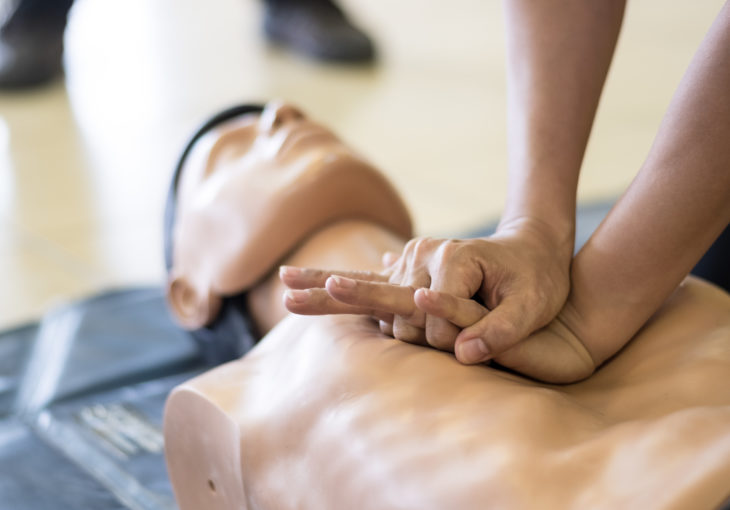Each year, 475,000 Americans die from cardiac arrest, an electrical malfunction in the heart that causes an irregular heartbeat and disrupts the flow of blood to the brain, lungs and other organs.
Cardiac arrest claims more lives than colorectal cancer, breast cancer, prostate cancer, influenza, pneumonia, auto accidents, HIV, firearms, and house fires combined, according to an American Heart Association consensus statement on cardiopulmonary resuscitation quality.
On average, someone dies from cardiovascular disease every 36 seconds in the U.S., amounting to 2,380 deaths each day.
Less than 10% of the 350,000 people in the U.S. who suffer a cardiac arrest outside of the hospital survive. If cardiopulmonary resuscitation (CPR) is administered, their chance of survival doubles or even triples. However, less than half of cardiac arrest victims receive CPR from a bystander.
Cardiac arrest is reversible in most cases, if it’s treated immediately. CPR is a crucial link in the chain of survival, and with Hands Only CPR, it’s easy to help. As part of its #StrongerHearts collaboration with the American Heart Association, LifeBridge Health is stressing the importance of utilizing CPR as a lifesaving measure.
June 1-7 is CPR and AED Awareness Week.
“If you see someone suddenly collapse, the most important thing to do is react quickly,” says Mohammed Abuzahra, M.D., F.A.C.C., a board-certified and interventional cardiologist with the LifeBridge Health Cardiovascular Institute and chair of cardiology at Northwest and Sinai hospitals. “Every second counts, and it’s easy to administer CPR even without training.”
With Hands Only CPR, there are just two steps to remember:
- If you see a teen or adult suddenly collapse, call 911.
- Start chest compressions. Use the heel of the hand, placed in the center of the chest with the other hand on top. Push hard and fast in the center of the chest until help arrives, 120 beats per minute, at about the pace of the song, Staying Alive.
Watch this short video to learn Hands Only CPR.
For children and infants, CPR with rescue breaths is recommended. Chest compressions are performed with one or two hands, depending on the size of the child, or two fingers for infants, to a depth not to exceed two inches. Rescue breaths are performed by pinching the nose closed, tilting the head back and forming a complete seal over the mouth to enable air flow. For single rescuer situations, the ratio is two breaths for every 30 compressions. If a two-rescuer situation, the ratio is two breaths for 15 compressions.
“Sometimes people are hesitant to respond in an emergency situation for fear of causing harm,” Dr. Abuzahra notes. “But it’s important to react when someone collapses. Performing CPR can mean the difference between life and death.”
To learn more about the #StrongerHeart initiative, visit: https://www.lifebridgehealth.org/StrongerHearts/StrongerHeartsMD.aspx
Editor’s note: This guest post was provided by LifeBridge Health, a #StrongerHearts Life is Why sponsor.
